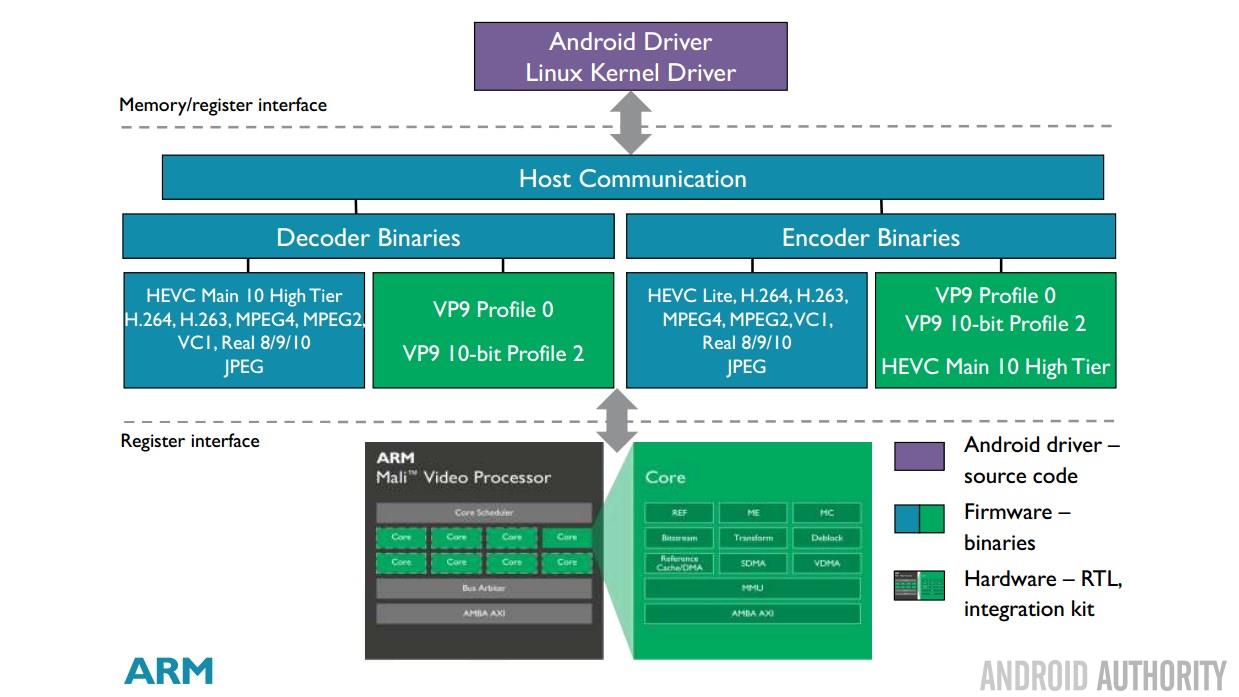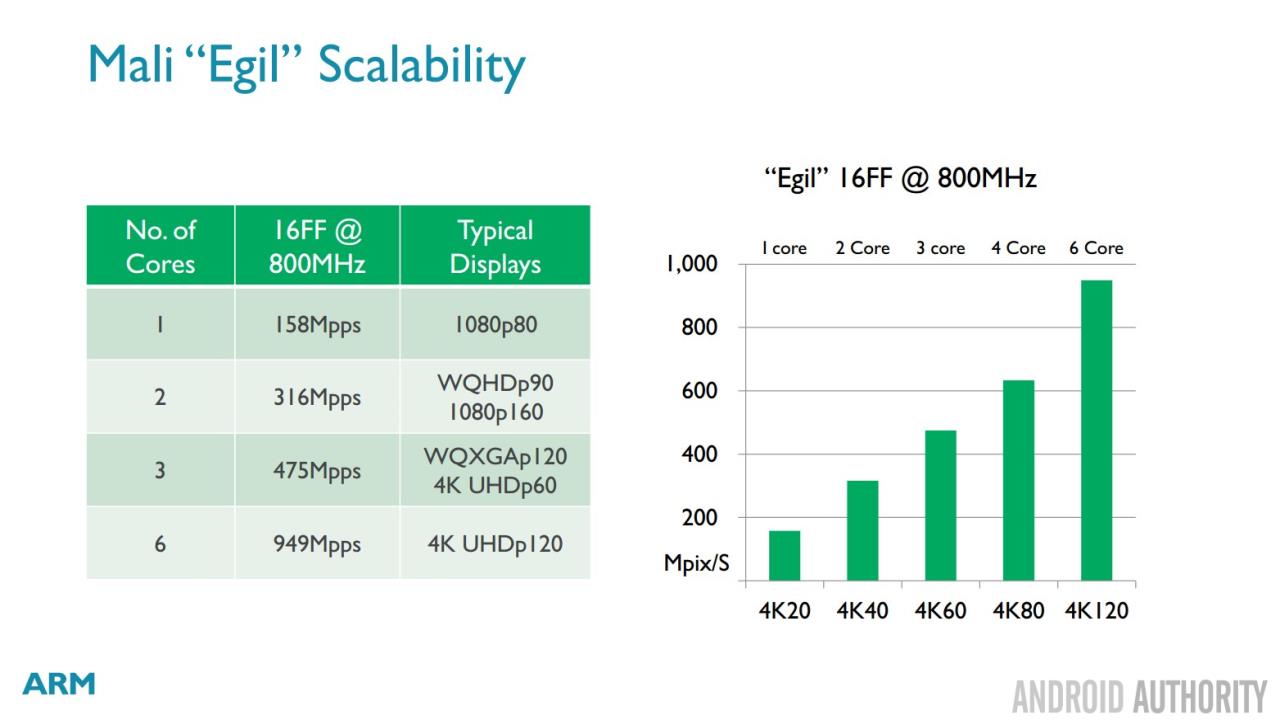Affiliate links on Android Authority may earn us a commission. Learn more.
ARM shares some details of upcoming Egil video processor

Although we often concentrate on the CPUs and GPUs that are found at the heart of our smartphones and tablets, we should never forget that a System-on-a-Chip (SoC) incorporates several other important components including a video processor.
One of the biggest types of traffic on the Internet is video. Services like YouTube, Vimeo, and Netflix are part of the staple diet for any smartphone, tablet or smart TV. In the past video decoding and video encoding were handled by the CPU, with maybe some help from the GPU. However software based decoding and encoding of complex video formats isn’t very battery friendly. Instead it is better to use a dedicated processor, one which is built specifically to handle video formats. Known as video processors these special video engines are built into SoCs and are stitched together with the GPU and the display processor to make a multimedia stack.
A SoC that uses a CPU, GPU, display processor and video processor from the same company has the advantage that all the components work efficiently together along with highly optimized software drivers. That is why ARM not only supplies CPUs (like the Cortex-A73) and GPUs (like the Mali-G71) to chip makers, but also display processors and video processors.
Video processors are one of the unsung heroes of the mobile revolution.
At the moment ARM’s top of the range video processor is the Mali-V550. It was ARM’s first video decoder which included HEVC (H.265) hardware encoding and decoding in a single core. As well as H.265, the processor can also do hardware decoding and encoding of H.264, MP4, VP8, VC-1, H.263 and Real.
ARM has now revealed some details of its new generation video processor code named “Egil”. Like the Mali-V550 this new video processor can have multiple cores and as such it can simultaneously handle the encoding and decoding of video data, which is of course very useful for video calls (like Skype etc) or any type of video conferencing application. And what is more, it can use multiple codecs at the same time.

A single core Egil processor can handle full HD (1080p) at 80 frames per second. When built in a six core configuration, the processor can handle 4K at 120 frames per second. When compared to the current V550 that is a significant speed boost as a single core V550 can process full HD at 60 frames per second, and for 4K at 120 frames per second you needed eight cores, not six.
One of the main focuses of Egil is video encoding. As well as a series of general improvements which benefit all the encoders, like a redesign of the motion estimation engine, Egil brings VP9 encode to mobile and adds support for B-frame and 10-bit encode support to HEVC.
Video processors are one of the unsung heroes of the mobile revolution. We are all just used to tapping on a link and then sitting back to enjoy a video. However deep inside the Soc, at the heart of your smartphone is a video processor which is working away to efficiently decode that video and get it ready to be displayed on your screen. As the codecs get more advanced and as the demands for resolution and bandwidth increase, the video processors will keep step, however probably unnoticed.
There aren’t any details about when the new video processor will be announced or when it will be available in actual devices, however there is one thing we can probably surmise. ARM unveiled its 4K capable Mali-DP650 mobile display processor back in January. The DP650 came after the DP500 and the DP550. ARM’s current video processor is called the V550 and it came after the V500. If ARM stays true to its naming conventions then I guess the Egil video processor will eventually see the light of day as the Mali-V650. But we will have to wait and see!